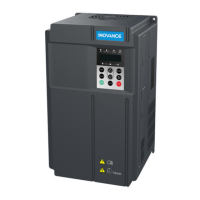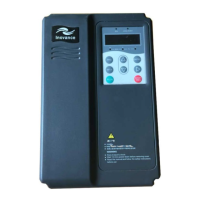Safety Information and Precautions
- 5 -
Working Environment and Handling
Matters related to transport, storage, installation, IP rating, working environment and AC Drive tolerance
limits (temperature, ambient, voltage, pollution, vibration etc) can be found within this manual. The guidelines
and recommendations should be followed in order to gain long term trouble free operation as the lifetime
of the AC Drive is dependent on the working environment and correct handling of the product in the initial
installation stage.
Electrical Installation - Safety
Electrical shock risk is always present within an AC Drive including the output cable leading to the motor
terminals. Where dynamic brake resistors are tted external to the AC Drive, care must be taken with regards
to live contact with the brake resistors, terminals which are at high DC voltage and potentially lethal. Cables
from the AC Drive to the dynamic brake resistors should be double insulated as DC voltages are typically 600
to 700 VDC.
Mains power supply isolation switch should be fitted to the AC Drive. The mains power supply must be
disconnected via the isolation switch before any cover of the AC Drive can be removed or before any
servicing work is undertaken
Stored charge in the DC bus capacitors of the PWM inverter is potentially lethal after the AC supply has
been disconnected. The AC supply must be isolated at least 10 minutes before any work can be undertaken
as the stored charge will have been discharged through the internal bleed resistor tted across the DC bus
capacitors.
Whenever possible, it is good practice to check the DC bus voltage with a VDC meter before accessing the
inverter bridge. Where the AC Drive input is connected to the mains supply with a plug and socket, then upon
disconnecting the plug and socket, be aware that the plug pins may be exposed and internally connected
to the DC bus capacitors (via the internal bridge rectier in reversed bias). Wait 10 minutes to allow stored
charge in the DC bus capacitors to be dissipated by the bleed resistors before commencing work on the AC
Drive.
When using an earth leakage circuit breaker, use a residual current operated protective device (RCD) of
type B (breaker which can detect both AC and DC). Leakage current can cause unprotected components to
operate incorrectly. If this is a problem, lower the carrier frequency, replace the components in question with
parts protected against harmonic current, or increase the sensitivity amperage of the leakage breaker to at
least 200 mA per drive.
Factors in determining leakage current:
• Size of the AC drive
• AC drive carrier frequency
• Motor cable type and length
• EMI/RFI lter
For more information, contact Inovance.
Complying with Local Regulations
The installer of the AC Drive is responsible for complying with all relevant regulations for wiring, circuit
fuse protection, earthing, accident prevention and electromagnetic (EMC regulations). In particular fault
discrimination for preventing re risk and solid earthing practices must be adhered to for electrical safety
(also for good EMC practice). Within the European Union, all machinery in which this product is used must
comply with the following directives;
2014/35/EU: Low Voltage Directive
2014/30/EU: Electromagnetic compatibility

